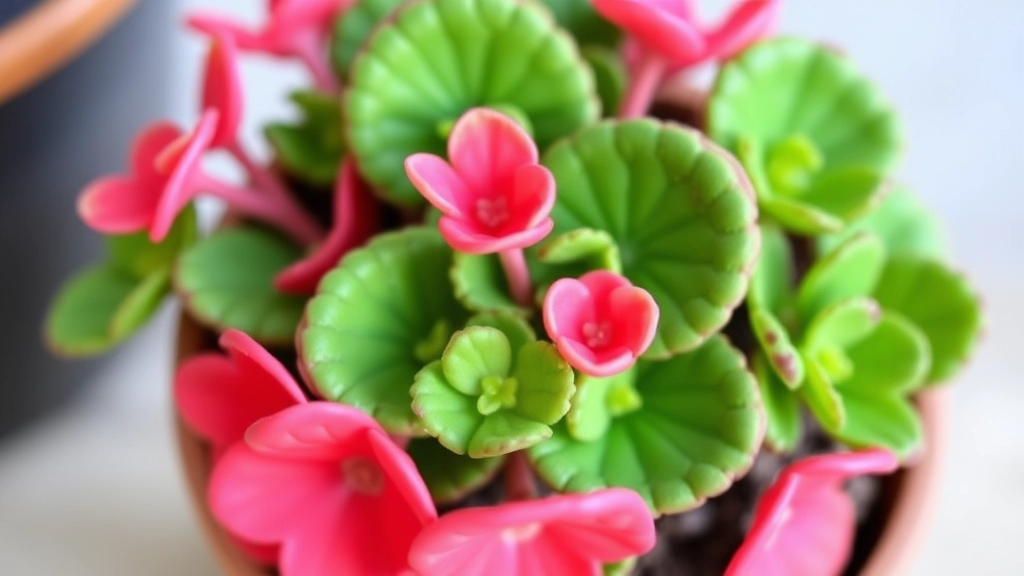Mastering Kalanchoe Chocolate Soldier Care
Looking to master Kalanchoe Chocolate Soldier care? You’re in the right place. This unique succulent, known for its fuzzy, chocolate-tipped leaves, thrives with the right attention. Let’s dive into the essentials: light, water, soil, and temperature needs to keep your Chocolate Soldier healthy and vibrant.
Essential Care Tips
First, ensure your plant gets plenty of bright, indirect light. Too much direct sunlight can scorch its leaves. Watering is simple—let the soil dry out completely between waterings to avoid root rot. A well-draining soil mix is crucial, and keeping your Kalanchoe in a temperature range of 60-75°F will help it flourish. With these basics, you’ll have a thriving Chocolate Soldier in no time.
Optimal Light Conditions for Chocolate Soldier
Are you struggling to keep your Chocolate Soldier (Kalanchoe tomentosa) thriving? One key factor that can make or break its health is light. Understanding the optimal light conditions for this delightful succulent is crucial to ensuring its vibrant growth and stunning appearance.
Understanding Light Requirements
Chocolate Soldiers thrive in bright, indirect sunlight. Here’s what you need to keep in mind:
- Direct Sunlight: While they can tolerate some direct sunlight, prolonged exposure can scorch their leaves. Aim for a few hours of morning sun if possible.
- Indirect Light: Placing your plant near a window with filtered light is ideal. South or west-facing windows often provide the best conditions.
- Artificial Light: If natural light is limited, consider using grow lights. Position them about 12-18 inches above the plant for optimal results.
Signs of Proper Lighting
Keep an eye on your Chocolate Soldier. Healthy plants will exhibit:
- Vibrant Colour: Leaves should be a rich green with hints of silvery fuzz.
- Compact Growth: A leggy appearance can indicate insufficient light.
Adjusting Light Conditions
If you notice your plant struggling, don’t hesitate to adjust its position. Moving it closer to a light source can make a world of difference.
For more detailed care tips, you can check out our Chocolate Soldier Kalanchoe care guide. Additionally, if you’re interested in propagation methods, our step-by-step guide on propagating Kalanchoe leaves might be helpful.
Watering Schedule and Best Practices
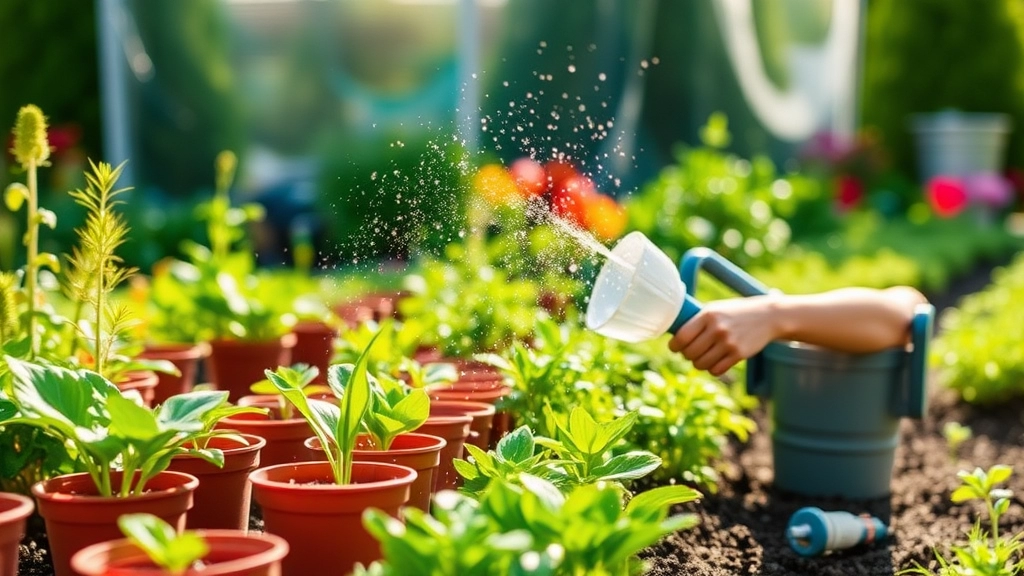
So, you’ve got your Chocolate Soldier (Kalanchoe Tomentosa) all set up, and now you’re wondering, “How often should I water this beauty?”
Well, let’s dive in!
Understanding Your Plant’s Needs
Chocolate Soldiers thrive in a well-draining environment, so overwatering is a big no-no. Here’s how to nail down your watering routine:
- Frequency: Aim to water every 2-3 weeks during the growing season (spring and summer). In the winter, scale it back to once a month.
- Check the Soil: Stick your finger about an inch into the soil. If it feels dry, it’s time to water. If it’s still moist, wait a few more days.
- Watering Technique: When you do water, give it a good soak until you see water draining from the bottom of the pot. This ensures the roots are getting enough moisture.
Best Practices to Keep in Mind
- Use Room Temperature Water: Cold water can shock the roots. Always opt for water that’s at room temperature.
- Avoid Watering Leaves: Focus on the soil, not the leaves. Wet leaves can lead to rot and pests.
- Adjust for Season: As the seasons change, so should your watering habits. In the hotter months, you might need to water more frequently, while in cooler months, less is more.
Signs of Over or Under-Watering
- Overwatering: If the leaves turn yellow or mushy, it’s a sign you’re giving too much love. Cut back on the watering immediately.
- Under-Watering: If the leaves start to wrinkle or shrivel, it’s time to give your plant a drink.
Soil Requirements for Healthy Growth
When it comes to nurturing your Chocolate Soldier, the right soil is essential for ensuring healthy growth. Many plant enthusiasts often wonder why their Kalanchoe Tomentosa isn’t thriving. The answer often lies in the soil composition.
Ideal Soil Composition
For optimal growth, the Chocolate Soldier thrives in well-draining soil. Here’s what to consider:
- Cactus Mix: A commercial cactus or succulent mix is often ideal. These mixes are specifically formulated to provide excellent drainage.
- Perlite or Pumice: Adding perlite or pumice to your soil mix can enhance aeration and drainage. Aim for a mix that consists of:
- 50% potting soil
- 25% perlite
- 25% sand
- pH Level: Kalanchoe Tomentosa prefers a slightly acidic to neutral pH, ideally between 6.0 and 7.0. You can easily test your soil with a pH kit.
Avoiding Common Soil Mistakes
Many growers make the mistake of using heavy, moisture-retentive soils. This can lead to root rot, a common issue with Chocolate Soldiers. To avoid this:
- Skip the Garden Soil: Regular garden soil retains too much moisture and can suffocate the roots.
- Check for Compaction: Ensure your soil remains loose and aerated. Compacted soil can hinder growth.
Repotting Tips
As your Chocolate Soldier grows, it may need repotting. When you do:
- Choose the Right Time: Spring is the best time for repotting, as the plant is entering its active growth phase.
- Select a Slightly Larger Pot: Ensure your new pot has drainage holes and is just a size larger than the current one to prevent excess moisture retention.
For more detailed guidance on repotting and care, check out our comprehensive guide on Kalanchoe Panda Plant care. Additionally, if you’re interested in other Kalanchoe varieties, our guide to top flowering Kalanchoe species might be helpful.
Temperature and Humidity Preferences
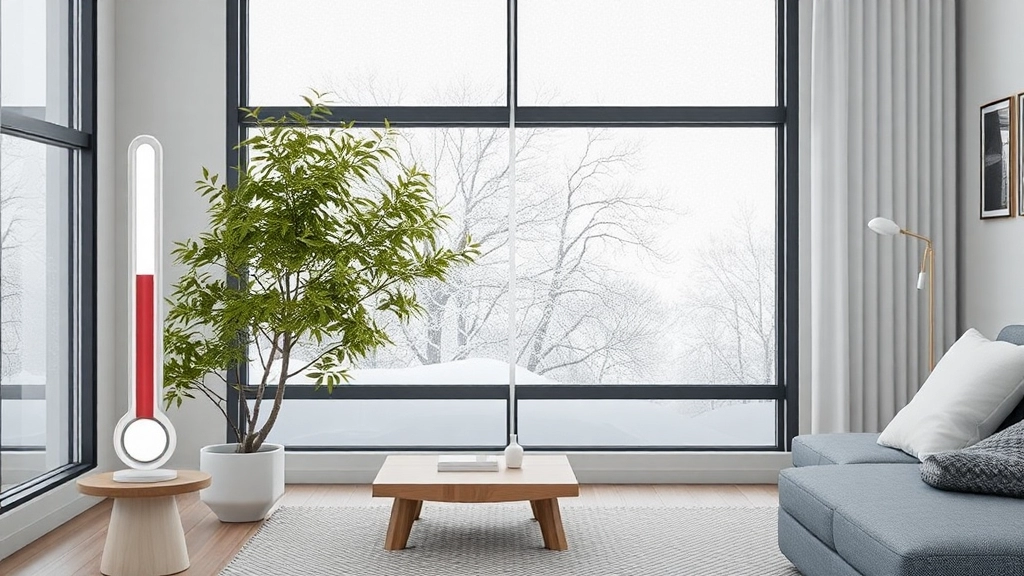
When it comes to nurturing your Chocolate Soldier, understanding its temperature and humidity preferences is crucial. You might be wondering, “What’s the ideal environment for my Kalanchoe Tomentosa?”
Ideal Temperature Range
- Daytime: Aim for a temperature between 20°C to 25°C (68°F to 77°F).
- Nighttime: A slight drop to around 15°C to 18°C (59°F to 65°F) is beneficial.
- Avoid Extremes: Temperatures below 10°C (50°F) can stress the plant, leading to poor growth or even death.
Humidity Levels
- Low Humidity: Chocolate Soldiers thrive in low humidity environments.
- Optimal Range: Keep humidity levels between 30% to 50%.
- Avoid Damp Spaces: High humidity can lead to fungal issues and rot.
Practical Tips
- Location Matters: Position your plant in a room with good airflow.
- Monitor Changes: Use a thermometer and hygrometer to track temperature and humidity.
- Adjust Accordingly: If your home is too humid, consider using a dehumidifier.
V. Fertilizing the Chocolate Soldier
As we delve deeper into nurturing your Chocolate Soldier, understanding the right fertilization approach is essential for promoting robust growth.
Why Fertilization Matters
You might wonder, “How often should I fertilize my Kalanchoe Tomentosa?”
Well, fertilization plays a crucial role in providing the necessary nutrients that your plant might lack in its soil.
Best Practices for Fertilizing
Here are some straightforward tips for fertilizing your Chocolate Soldier:
- Type of Fertilizer: Opt for a balanced, water-soluble fertilizer. A 20-20-20 formula works wonders.
- Dilution: Always dilute the fertilizer to half-strength to prevent root burn.
- Frequency: Fertilize every 4-6 weeks during the growing season (spring and summer).
- Avoid Winter Feeding: As the plant enters dormancy in winter, refrain from fertilizing.
Signs Your Plant Needs Fertilizer
Keep an eye out for these indicators:
- Pale Leaves: If the leaves appear washed out, it may signal a nutrient deficiency.
- Stunted Growth: If growth seems sluggish, a nutrient boost might be necessary.
Additional Tips
- Organic Options: Consider using organic fertilizers like fish emulsion or compost tea for a natural approach.
- Soil Testing: Periodically test your soil to gauge nutrient levels and adjust your fertilization accordingly.
- Post-Fertilizing Care: For more detailed guidance, refer to our post-flowering care tips for Kalanchoe.
For a comprehensive guide on nurturing your plant, check out our Chocolate Soldier care guide.
Preventing Common Pests and Diseases
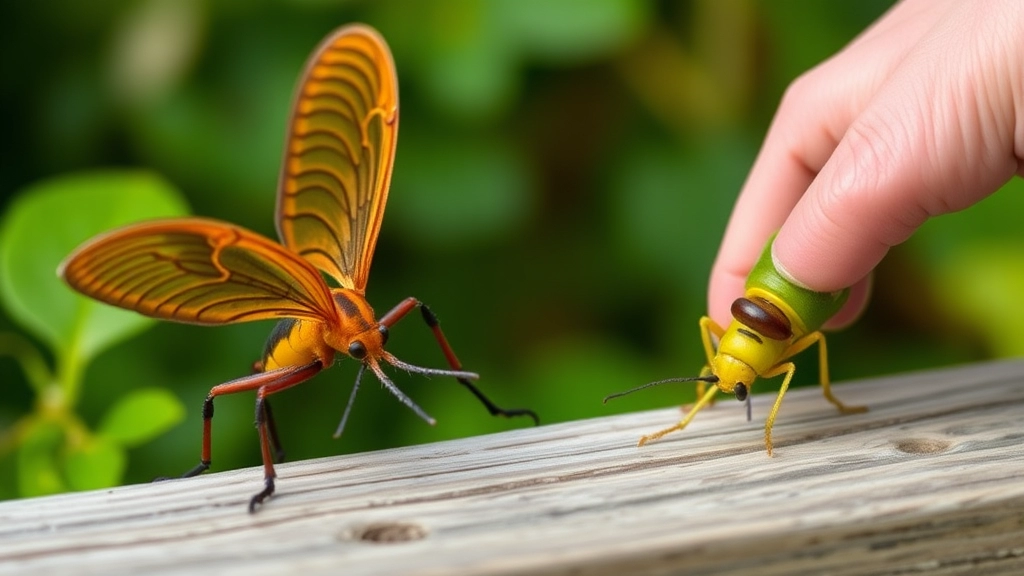
So, you’ve got your Chocolate Soldier thriving, but what if I told you that pests and diseases could sneak in and ruin your hard work?
Let’s chat about how to keep those pesky intruders at bay.
Common Pests to Watch For:
- Aphids: Tiny green or black bugs that suck the sap from your plant.
- Mealybugs: White, cottony blobs that love to hide in leaf joints.
- Spider Mites: Tiny red dots that create fine webbing on your leaves.
Signs of Trouble:
- Yellowing leaves
- Stunted growth
- Sticky residue on leaves
Prevention Tips:
- Regular Inspection: Check your plants weekly. If you spot anything unusual, act fast!
- Keep It Clean: Wipe down leaves with a damp cloth. This helps remove dust and potential pests.
- Natural Predators: Introduce ladybugs or lacewings to your garden. They love munching on aphids!
- Neem Oil Spray: A natural remedy that can deter many pests. Just mix it with water and spray.
Common Diseases to Be Aware Of:
- Root Rot: Caused by overwatering. Keep an eye on the soil moisture.
- Powdery Mildew: Looks like a white powder on leaves. Good air circulation helps prevent it.
Disease Prevention:
- Proper Watering: Always let the soil dry out between watering.
- Good Airflow: Don’t overcrowd your plants. Space them out for better circulation.
- Healthy Soil: Use well-draining soil to prevent root issues.
Propagation Methods for Kalanchoe Tomentosa
As we delve deeper into the care of your Chocolate Soldier, understanding how to propagate Kalanchoe Tomentosa can open up new opportunities for expanding your collection or sharing with friends.
Why Propagate?
Propagation allows you to create new plants from existing ones, ensuring you can enjoy the beauty of Kalanchoe Tomentosa in multiple spaces or share them with loved ones.
Popular Propagation Methods
Leaf Cuttings
Select healthy leaves from the parent plant.
Allow the cut ends to dry for a few hours or overnight.
Place the dried cuttings in well-draining soil, ensuring they are upright.
Water lightly and keep in bright, indirect light.
Offsets
Look for small offsets or pups around the base of the parent plant.
Gently separate them, ensuring some roots are attached.
Plant them in their own pots with suitable soil and water lightly.
Stem Cuttings
Cut a healthy stem just below a leaf node.
Let the cutting dry for a day or two to form a callus.
Plant in well-draining soil and provide indirect sunlight.
Tips for Successful Propagation
Timing Matters: Late spring or early summer is ideal for propagation, as the plant is actively growing.
Humidity Helps: Consider placing a plastic bag over the pot to maintain humidity, but ensure there’s airflow to prevent rot.
Patience is Key: Roots may take a few weeks to develop, so be patient and monitor moisture levels.
By mastering these propagation techniques, you can easily multiply your Kalanchoe Tomentosa and create a thriving mini-garden. For more detailed steps, check out our [step-by-step guide to fuzzy Kalanchoe propagation](https://planthq.org/stepbystep-guide-to-fuzzy-kalanchoe-propagation/) and [how to propagate Kalanchoe Tomentosa](https://planthq.org/how-to-propagate-kalanchoe-tomentosa-stepbystep-guide/).
Managing Flowering: Indoors vs Outdoors
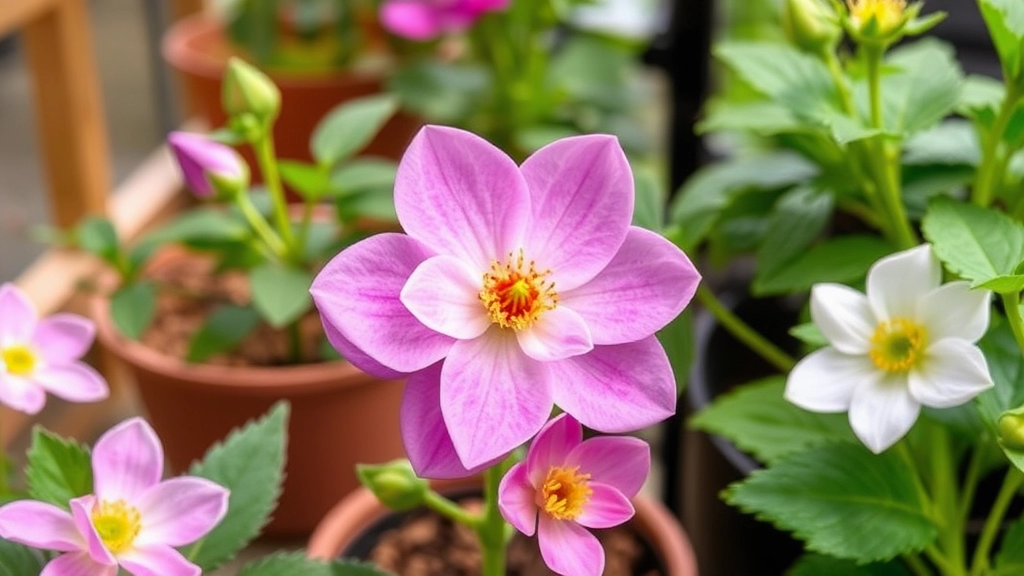
So, you’re wondering how to get your Chocolate Soldier to bloom beautifully, whether it’s sitting on your windowsill or basking in the garden.
Indoors: The Cozy Bloomers
When your Kalanchoe Tomentosa is indoors, it can be a bit of a diva. Here’s how to coax those flowers out:
- Light: Aim for bright, indirect sunlight. A south-facing window is your best bet.
- Watering: Keep the soil slightly dry between waterings. Too much moisture can lead to flower drop.
- Temperature: Maintain a warm environment, ideally between 18-24°C (65-75°F).
Outdoors: The Sun-Loving Show-offs
If you’ve got your Chocolate Soldier outside, it’s a different ball game:
- Sun Exposure: Direct sunlight is key! They thrive in full sun for at least 6 hours a day.
- Watering: During hot spells, they’ll need a bit more water. Just ensure the pot drains well.
- Seasonal Timing: Flowering typically happens in late winter to early spring.
Common Challenges
- Indoor Challenges: Low light can hinder blooming. If your plant isn’t flowering, consider moving it to a brighter spot.
- Outdoor Challenges: Pests like aphids can be more prevalent outside. Keep an eye out!
Seasonal Care and Adaptation for Chocolate Soldier
As we transition through the seasons, it’s crucial to adapt our care strategies for the Chocolate Soldier (Kalanchoe Tomentosa). This succulent thrives best when we align our care practices with its natural growth cycles.
Understanding Seasonal Changes
Spring and Summer: Growth Phase
- Light: Increase exposure to bright, indirect sunlight.
- Watering: Water more frequently, allowing the soil to dry out between sessions.
- Fertilizing: Introduce a balanced, diluted fertiliser every few weeks to support growth.
Autumn and Winter: Dormancy Phase
- Light: Maintain bright light but reduce direct sunlight exposure.
- Watering: Cut back significantly; water only when the soil is completely dry.
- Humidity: Ensure the environment remains dry to prevent rot.
Tips for Seasonal Adaptation
- Monitor Temperature: Keep your Chocolate Soldier in a warm spot, ideally between 18-24°C.
- Adjust Potting: Consider repotting in spring when the plant is actively growing.
- Prune Wisely: Trim any dead or wilted leaves in late winter to prepare for new growth.
Real-Life Example
I remember when I first got my Chocolate Soldier. During the summer, I was overly generous with watering, thinking it needed more. However, as the seasons changed, I realised that less was more. Adjusting my routine helped it flourish beautifully.
For more detailed care tips on similar plants, check out our Care Guide for Kalanchoe Tomentosa. Additionally, if you are experiencing issues with your Kalanchoe, our article on Why Are My Kalanchoe Leaves Dying might provide some useful insights.
Choosing the Right Pot for Drainage
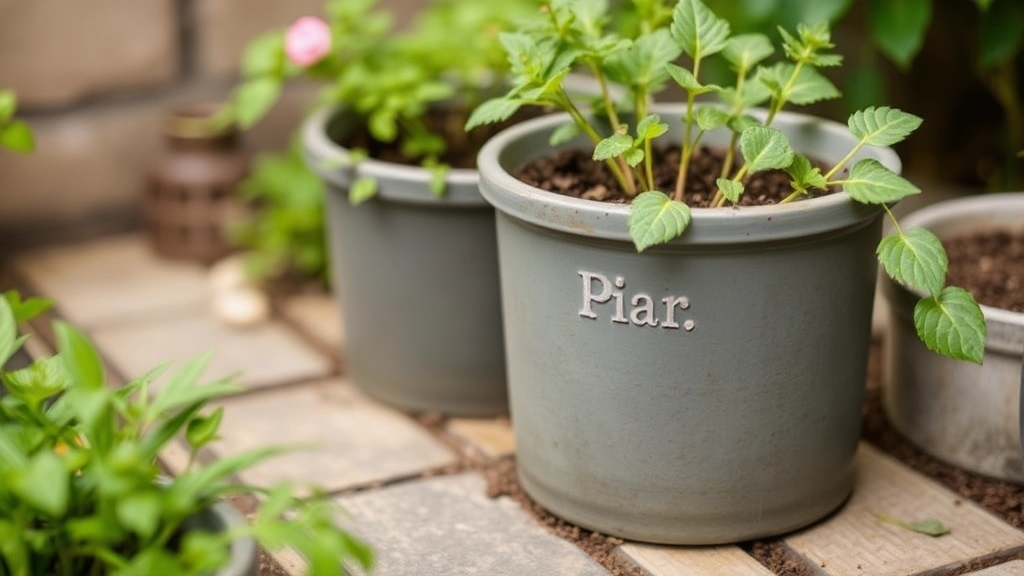
So, you’ve got your Chocolate Soldier and you’re ready to give it the best home possible. But wait—what about the pot? Choosing the right pot for drainage is crucial for your plant’s health.
Why Drainage Matters
A pot with good drainage helps prevent overwatering, which is one of the biggest issues for Kalanchoe tomentosa. When roots sit in water, they can rot, and nobody wants that!
What to Look For
Here’s a quick checklist for selecting the perfect pot:
- Material: Terracotta pots are great because they’re porous and allow moisture to escape. Plastic pots can work too, but make sure they have drainage holes.
- Size: Choose a pot that’s slightly larger than your plant’s root ball. This gives it room to grow without holding too much water.
- Drainage Holes: Always opt for pots with at least one drainage hole at the bottom. This is non-negotiable!
Tips for Potting
- Layering: Consider adding a layer of gravel or small stones at the bottom of the pot. This helps with drainage and keeps the soil from clogging the holes.
- Soil Choice: Use a well-draining soil mix. Cactus or succulent mixes are often perfect for Chocolate Soldiers.
- Check Regularly: After potting, keep an eye on how quickly the soil dries out. Adjust your watering schedule based on that.
How to Spot and Handle Overwatering Issues
Overwatering is a common concern for many plant enthusiasts, especially when it comes to the Chocolate Soldier (Kalanchoe tomentosa).
Recognising the signs early can save your plant from significant damage.
Signs of Overwatering
- Yellowing Leaves: One of the first indicators is yellowing leaves. If your Chocolate Soldier’s leaves are turning yellow and feel mushy, it’s a sign of distress.
- Wilting: Ironically, overwatered plants may also exhibit wilting. This occurs because the roots are drowning and unable to absorb water effectively.
- Root Rot: If you notice a foul smell or blackened roots when checking the soil, root rot might be present. This is a serious condition that requires immediate action.
- Mold Growth: White or grey mould on the soil surface is another red flag indicating excess moisture.
How to Handle Overwatering
If you suspect your Chocolate Soldier is overwatered, here’s what you can do:
- Stop Watering Immediately: Allow the soil to dry out completely before watering again.
- Check the Pot: Ensure your pot has adequate drainage holes. If not, consider repotting into one that does.
- Inspect the Roots: Gently remove the plant from its pot and check the roots. Trim away any blackened or mushy roots with sterilised scissors.
- Repot with Fresh Soil: Use a well-draining soil mix to give your plant a fresh start.
- Adjust Watering Schedule: Going forward, adopt a more cautious approach to watering. Allow the top inch of soil to dry out before adding more water.
- Monitor Conditions: Keep an eye on the humidity and temperature in your home. High humidity can exacerbate overwatering issues.
By taking these steps, you can help your Chocolate Soldier recover and thrive. For more detailed care tips, check out our guide on caring for Kalanchoe tomentosa. Additionally, if your plant is not blooming, you might find our article on fixing non-flowering Kalanchoe helpful.
FAQs on Kalanchoe Chocolate Soldier Care
How often should I water my Chocolate Soldier?
Water every 2-3 weeks during the growing season (spring and summer) and once a month in winter. Always check the soil moisture before watering.
What kind of water should I use for my plant?
Use room temperature water to avoid shocking the roots. Cold water can be harmful.
What are the ideal temperature and humidity levels for my Chocolate Soldier?
Daytime temperatures should be between 20°C to 25°C (68°F to 77°F) and nighttime temperatures between 15°C to 18°C (59°F to 65°F). Maintain humidity levels between 30% to 50%.
How can I prevent pests and diseases in my plant?
Regularly inspect your plant, keep it clean, and consider using natural predators or neem oil spray. Ensure good air circulation and proper watering habits to prevent diseases like root rot and powdery mildew.
What should I do if my plant’s leaves turn yellow or mushy?
Yellow or mushy leaves are signs of overwatering. Reduce the frequency of watering immediately.
How can I encourage my Chocolate Soldier to bloom indoors?
Provide bright, indirect sunlight, keep the soil slightly dry between waterings, and maintain a warm environment between 18-24°C (65-75°F).
What type of pot is best for my Chocolate Soldier?
Choose a pot with good drainage, preferably made of terracotta. Ensure it has at least one drainage hole and is slightly larger than the plant’s root ball.
Can I place my Chocolate Soldier outdoors?
Yes, they thrive in full sun with at least 6 hours of direct sunlight. Adjust watering frequency during hot spells and watch out for pests.
What are the signs of under-watering my plant?
Wrinkled or shriveled leaves indicate that your plant needs more water.
How can I improve drainage in my plant’s pot?
Add a layer of gravel or small stones at the bottom of the pot and use a well-draining soil mix, such as cactus or succulent soil.
